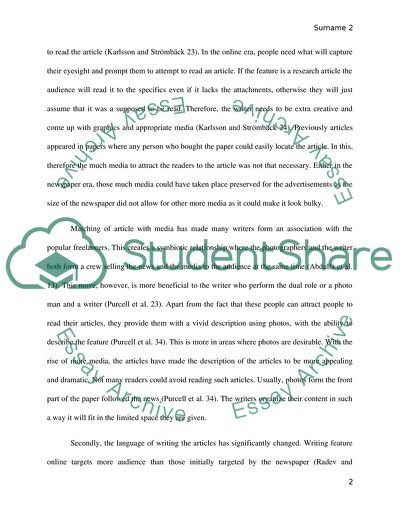Cite this document
(Changes in Future Writing as Journalism Goes Online Essay Example | Topics and Well Written Essays - 2750 words, n.d.)
Changes in Future Writing as Journalism Goes Online Essay Example | Topics and Well Written Essays - 2750 words. https://studentshare.org/journalism-communication/1879702-online-journalism-and-multimedia-story-telling-in-digital-age
Changes in Future Writing as Journalism Goes Online Essay Example | Topics and Well Written Essays - 2750 words. https://studentshare.org/journalism-communication/1879702-online-journalism-and-multimedia-story-telling-in-digital-age
(Changes in Future Writing As Journalism Goes Online Essay Example | Topics and Well Written Essays - 2750 Words)
Changes in Future Writing As Journalism Goes Online Essay Example | Topics and Well Written Essays - 2750 Words. https://studentshare.org/journalism-communication/1879702-online-journalism-and-multimedia-story-telling-in-digital-age.
Changes in Future Writing As Journalism Goes Online Essay Example | Topics and Well Written Essays - 2750 Words. https://studentshare.org/journalism-communication/1879702-online-journalism-and-multimedia-story-telling-in-digital-age.
“Changes in Future Writing As Journalism Goes Online Essay Example | Topics and Well Written Essays - 2750 Words”. https://studentshare.org/journalism-communication/1879702-online-journalism-and-multimedia-story-telling-in-digital-age.


